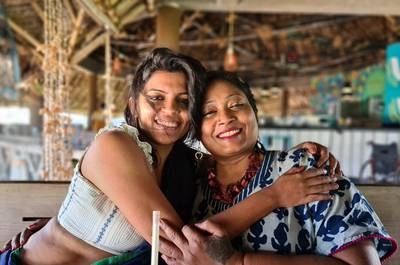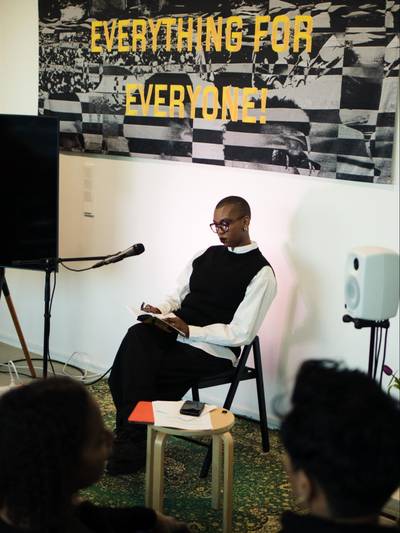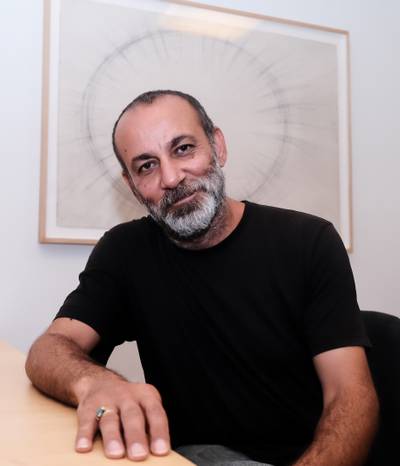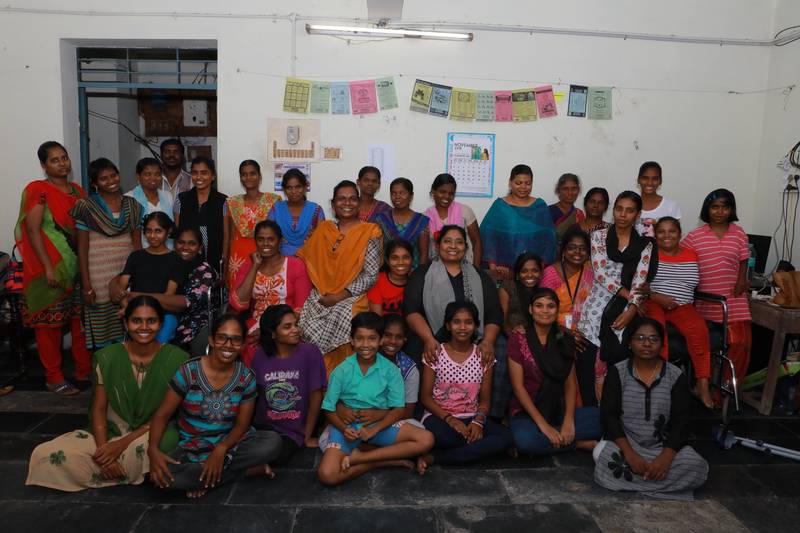

Dr Aiswarya along with friends and residents of ‘Better World Shelter for Women with Disabilities’
Greeshma Kuthar is an independent lawyer and journalist from Tamil Nadu. Her primary focus is investigating the evolving methods of the far-right, their use of cultural nationalism regionally and their attempts to assimilate caste identities into the RSS fold.
Aish has a lot of labels going on for her, but to me, she is a friend. We have long conversations every day, yet I was very confused about how to go about this. Eventually, I figured that the best way to do this was to record a podcast with Aish. When I was experimenting with this form in 2019, the second podcast I produced was with Aish. She took to it instantly, and her show, Dr. Aiswarya Explains, was an instant hit. Since then, she has been podcasting, and what better way to interview somebody than in a format they enjoy? Here is a transcription of our conversation, where we talk about Aish’s journey and her work:
GREESHMA: When the guys at NO NIIN wrote to me requesting that I talk to you about your work from the perspective of being close to you, I was like, ‘Dude! What?’ Of course, we’re good friends, but then there’s so much turbulence.
DR. AISH: Yes, it’s a very turbulent relationship!
But flavour is part of all relationships. And our flavour is spice! Having said that, this conversation is completely about you. I want to start with this question that we’ve discussed a lot between the both of us, and it’s also been a recurring theme, you know, with extended friends as well, where you have expressed this feeling that while we talk about so many other issues, be it any kind of feminist organising or anti-caste organising, there is so much support that these issues get, but the support that we give to issues of people with disabilities is very limited. Be it support that you have seen coming from either friends or people who are strangers.
This is not an accusation. It’s just a gentle reminder for the larger feminist movement. Many organisations talk about women’s rights, but there is a great deal of tokenism when it comes to issues related to women with disabilities. Issues that women with disabilities face are not taken up in a mainstream manner. One simple example I want to give - this is from 2017. When the GST regime was introduced, all appliances used by people with disabilities attracted a GST levy of 5% to 28%. So, there was a huge jump in price for even basic stuff like crutches and simple, inexpensive aids and appliances.
At that time, the only people protesting, talking about it, and outraging were the members of the community that were on the receiving end of this raw deal. At that time, very starkly, we noticed that the larger feminist movement did not take up this issue. I mean, not just the feminist movement; the other rights based spaces, like the Dalit movements, none of them took up this issue. There was an issue, if at all there was a time for you to talk. But no, they didn’t take it up, and we feel let down because for every mainstream issue that women face, women with disabilities have always joined their rallies, marches, and campaigns. But when it comes to our issue— issues that women with disabilities face— others don’t participate. Simply because I don’t think they still understand our issues, there is this gap in understanding. I still won’t say they’re uninterested or not involved.
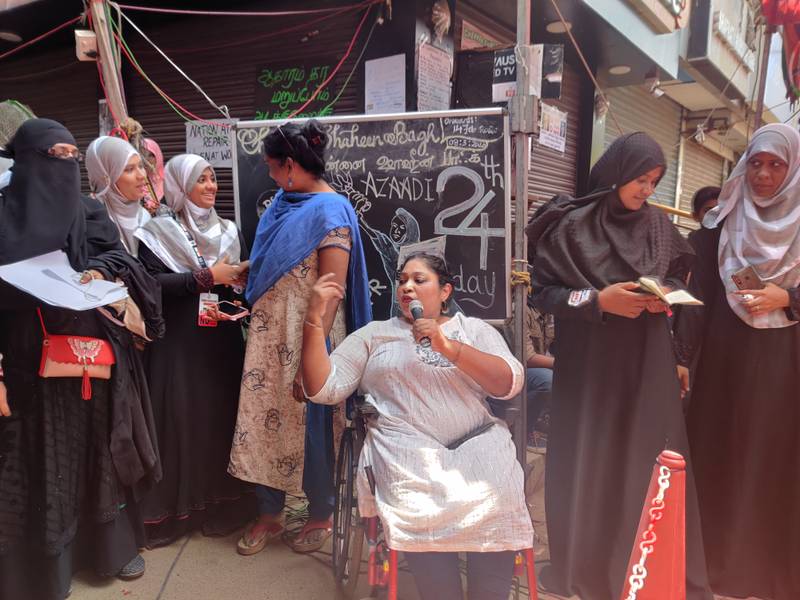

Aish at the anti-CAA protest site in Chennai
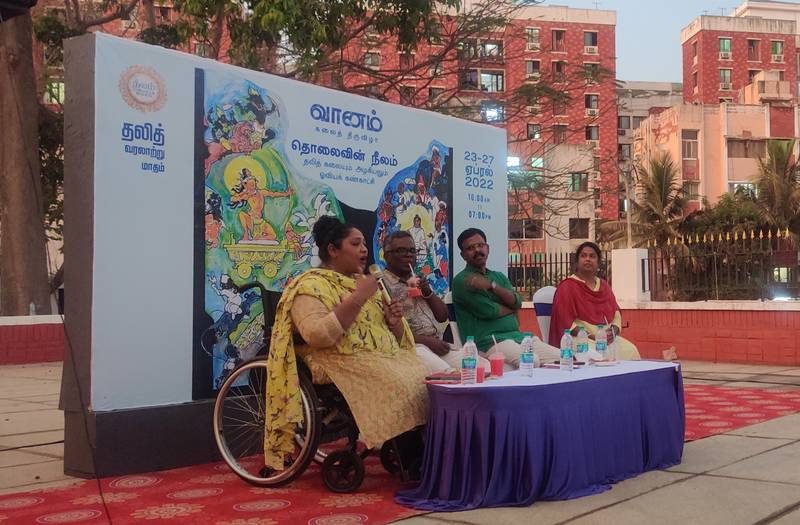

Aish as the guest of honor at the ‘Vanam Art Festival’ organised by ‘Neelam Cultural Center’
There are so many issues, yes. And out of these many, certain issues get picked up. Nationally, regionally. What gets left out, though, are fundamental, everyday issues. Let’s take just us. The times that we’ve travelled together, even to access public spaces, we’ve had to put up a fight. You always say we need to move away from just talking about ramps and that there is more to the issue of disability than just this. But the truth is, we are still stuck at that basic level. That’s the micro-picture. The macro-picture is that we are not even talking about it. Be it at the level of policy or at the level of representation.
You said it right. But I’d say that it’s changing now, with younger people like you, our friends, and many newer people getting involved in issues related to people with disabilities. I think there’s more amplification now. There is a conscious effort. Whenever there’s a general women’s rally, they are specifically asking for women with disabilities to come and participate, to be a part of the organising itself.
At that time, the only people protesting, talking about it, and outraging were the members of the community that were on the receiving end of this raw deal. At that time, very starkly, we noticed that the larger feminist movement did not take up this issue. I mean, not just the feminist movement; the other rights based spaces, like the Dalit movements, none of them took up this issue.
We are involved, yes, but it’s because there are people like you leading at the center. And there are spaces like the ‘Better World Shelter for Women with Disabilities’ that you are right now running and managing in Tamil Nadu. This is the only space like this in all of TN, and it’s because of you that a space like this exists. And because a space like this under your leadership is centring the issue to the extent that people are taking notice here and responding. You need to now tell everybody how this space came about! Because in your journey, a major turning point for you and those within the disability movement was when you started this space. Tell us more about how you went about starting a space for women with disabilities and what the challenges were.
I would, most importantly, call this a great learning experience. Though I have been a woman with disability all my life since I can remember, I never fully plunged into the issues of persons with disabilities or women with disabilities. It has only been in the last decade since we have been running this shelter that I’ve been more involved. Public health is my main core expertise. I had a regular government job; I was doing consultancy for various organizations. In 2012, I quit my government job, and I was doing a lot of other things that I personally wanted to do all these years that I couldn’t do. I produced some music albums, I dabbled in visual medium.
I didn’t have this plan of starting and running a shelter for women with disabilities. But in 2015, you’ll remember that all of us experienced this great Chennai floods, the whole city almost drowned because of this disaster. At that time during the month of November, just before the floods, the city was doing an assessment and they found that there was no safe space for women with disabilities. So the city council asked me to set up a shelter for women with disabilities. That’s how it started. I mean, I got involved unwillingly. That’s how it began from there. But once the wheels started in motion, then the rest is as they say.
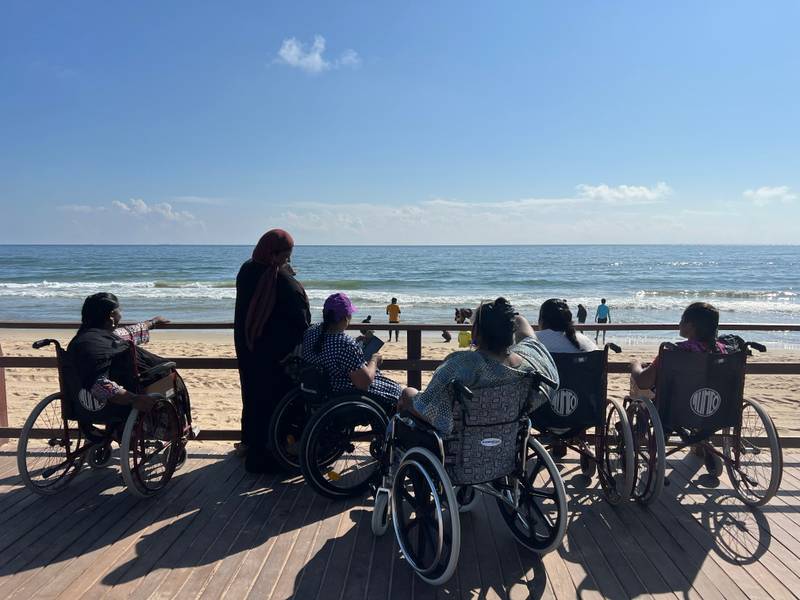

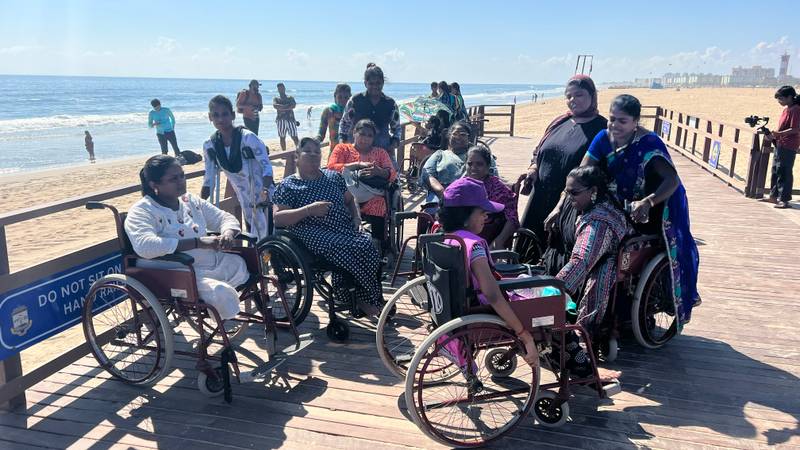

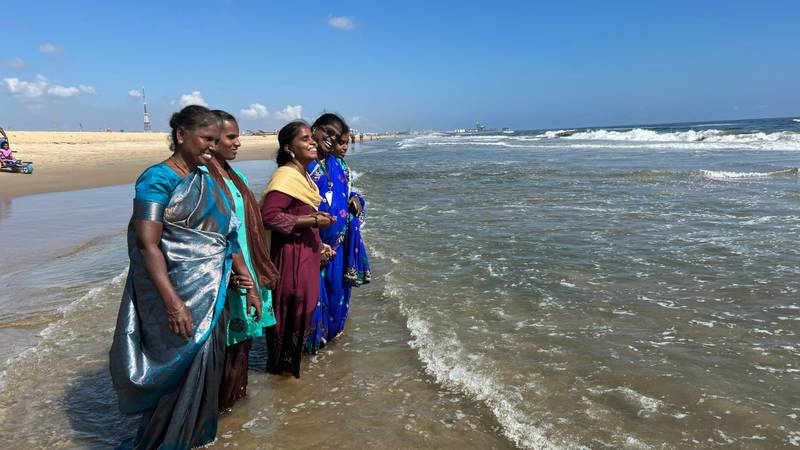

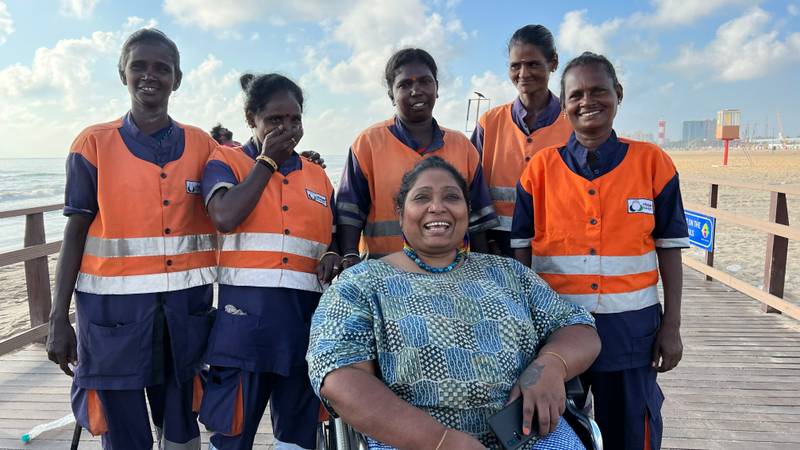

These photos were taken after a ramp was inaugurated at the Marina Beach in Chennai for people with disabilities. It was the first time that most women from Aish’s shelter went right up to the beach. Watch video.
From the time you started off, there has been a tremendous change in the way you have approached the space itself, isn’t there?
For us, there was no prototype to fall back on. There are lots of shelters and lots of spaces for women with disabilities, but a safe space in a city like Chennai is absent. It’s a novelty. So the question was: What will be our emphasis? What will be priorities? If you asked me today what we are doing compared to what we did seven years ago, there’s been a great evolution.
What has changed since you started? What was the major vision for this space back then, and now what is it that you have moved on to?
See, livelihood was a very important aspect. My central belief is that if a woman has the capacity to make money, she is empowered. That gives her a great deal of security for herself in society. If she has a place, she’s able to negotiate better; if she has money, then her livelihood is sorted, so preparing our women for independent living and making them self sufficient has been the goal from day one until today, but what we have learned along the way is that along with that, there is so much more that women want. Women want to have their own families. They want to have partners, they want to engage in recreation.
Is that different for women with disabilities? This basic need to be in relationships, to be in love. Why is this journey different for women with disabilities? It is assumed that non disabled people will be in relationships at some point, but is it the opposite for disabled people?
For disabled people, it’s not, especially for women. For men, it is a given. That is a very stark contrast between men with disabilities and women with disabilities. When it comes to men with disabilities, at least in our South Indian context, their families are always trying to get them married at the earliest. They’re trying to get them married so, in the eyes of the parents, the mother and father, they will have somebody to cook for them and clean for them. Take care of them. They’re shifting the care role to somebody else for men; it is somehow a rule that almost all men with disabilities will get married early to a woman who is most likely not disabled. Not the same for women with disabilities. We have no numbers, but I can tell you, less than 50% of women with disabilities will never get married.
Responding to the demands of the community is what we’ve got to do. In seven years, we’ve had 28 marriages that we’ve organised at the shelter. I don’t place enormous trust in marriage as an institution, but if the girls want it. So we’ve had one kind of shift in our thinking— thinking that you’ve had to accommodate within the vision of the organisation.
Is that why women who come to our shelter feel like they need to find partners?
Yes, and responding to the demands of the community is what we’ve got to do. In seven years, we’ve had 28 marriages that we’ve organised at the shelter. I don’t place enormous trust in marriage as an institution, but if the girls want it. So we’ve had one kind of shift in our thinking— thinking that you’ve had to accommodate within the vision of the organisation.
I can tell you a story. There was this one young woman—a lovely girl. Her father abandoned her when her mother died. So she had to move around a lot. She had to spend a couple of months in one aunt’s house, and then they would pass her on to another family, so she never had a home of her own. So in her own village, she was chuffed, shuttling between homes, that’s how she grew up. When she came to the shelter looking for a job to get settled in Chennai, I had a conversation with this girl. I asked her, “What do you want?” And she said, “I want to live well in front of the society and show them, I want to live well with a family.” The meaning of what she said is she wants to go back to the same street and the same community where she grew up, along with a partner and a little child perhaps, and that is then she can tell them, “Look, I’m living well”, because if not, if she has a great job, or if she has a big car that’s not living well for her. For her, having somebody to call a partner is living life well. Women with disabilities place great emphasis on relationships and making their own little families.
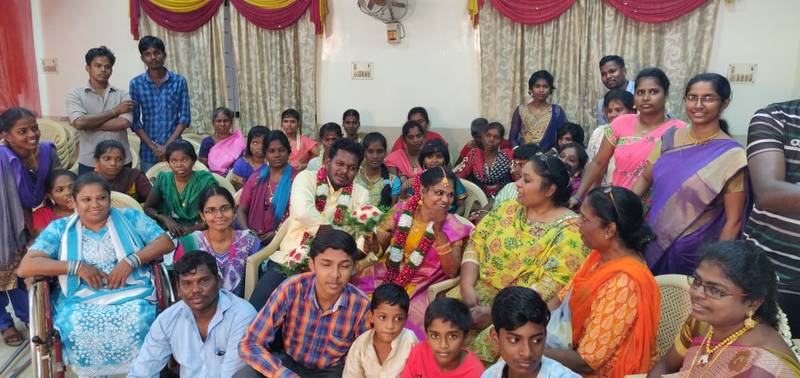

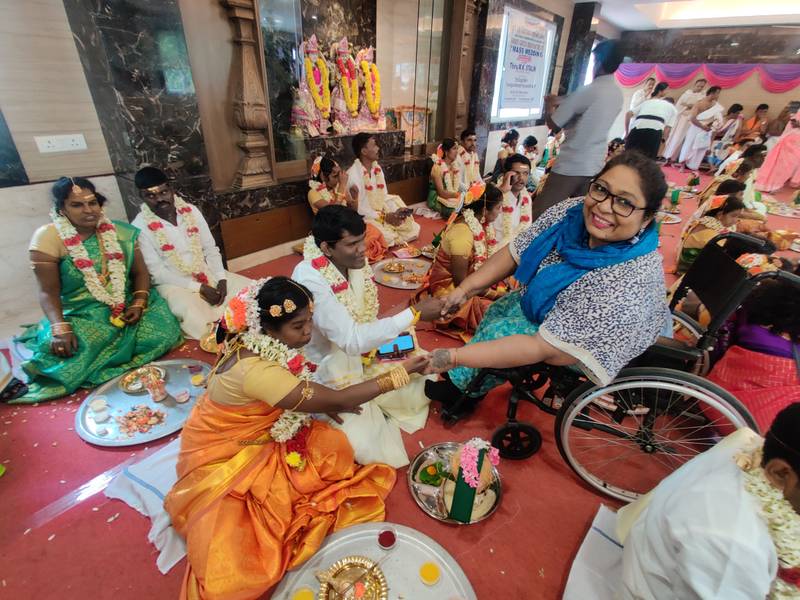

Supporting relationships of those who live at the shelter has been of primary importance to Aish.
Cool. If that’s the way in which they want to set up a space for themselves and it makes them happy, it makes sense, right? Like this is one important area of work that you have scoped out into, understanding what women at the shelter want and responding to it, I would say another major branch of work is connected with your work as an artist. So before we go into that, I’m going to ask you a very interesting question. If you were to define an artist, how would you do it?
Artist. It’s such a simple word, no?
Simple word, simple question; please give us a simple yet nuanced answer though!
The world is divided into two kinds of people, one who are artists, and one who are not artists. This is according to artists, but according to me, I think anybody who is in pursuit of beauty is an artist. And if they are able to take anything and create something new out of it, simply as an expression of themselves, and to put something beautiful out there for somebody else, or for their own consumption. Somebody wrote a book 500 years ago, today, we read it and we take great joy out of it. So that’s an artist. So you just take nothing or whatever available material, and then you express yourself and make a new thing out of it.
That’s an amazing definition. There are so many forms of art that you have dabbled in, you’ve produced music, I love your watercolor paintings, and I love the work that you’re doing in your garden right now, that’s a different form of art by itself. But most importantly, quilting is a form through which you have expressed yourself. You have enjoyed being a quilter. So you should tell us how your journey with art started, and then we should jump to quilting!
My journey with art started in childhood because we were exposed to it back then. But in 2013, I was going through a rough patch in my life. A very dear friend, Olga, had this old basket at home with all these threads, needles, and haberdashery. She brought it to me, and then we both opened it and explored it. That’s how it all started. And then, of course, now is a great time to learn art because we have YouTube and so many blogspots. We have Facebook groups, and for me personally, I wouldn’t have become a quilter if it hadn’t been for these free resources, so generously shared by women all across the world. For somebody who knew nothing, I literally felt their hands take my hand and make me do it.
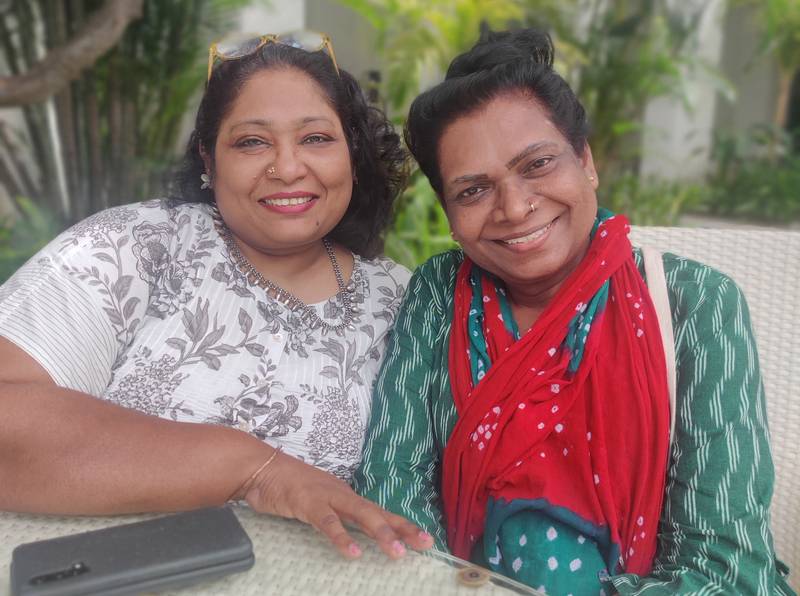

Aish with Olga, who introduced her to sewing.
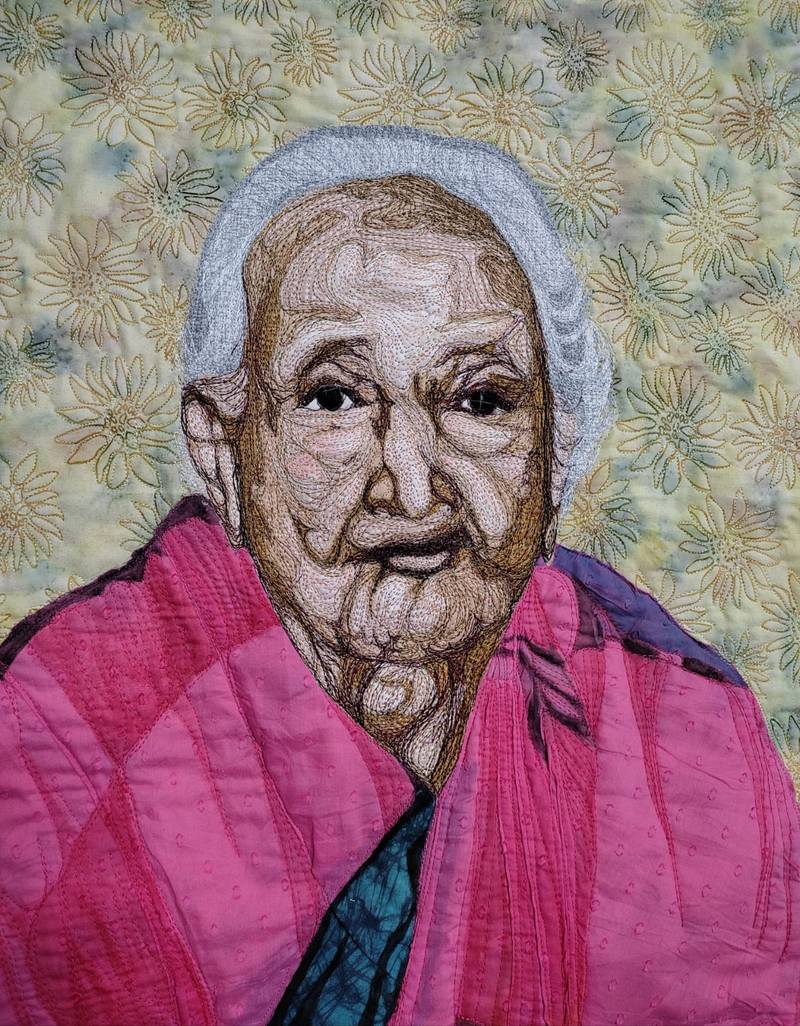

100 Years, #quiltportrait for a friend’s grandmother who turned 100, portraying her gentle spirit and sweet face.
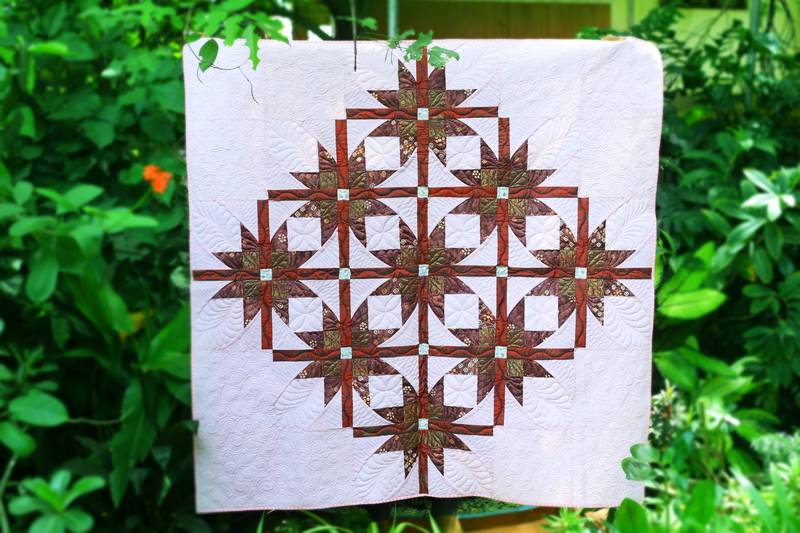

Ajji Memory, quilt for a friend who’d lost her grandmother, using her used and much loved silk sarees.
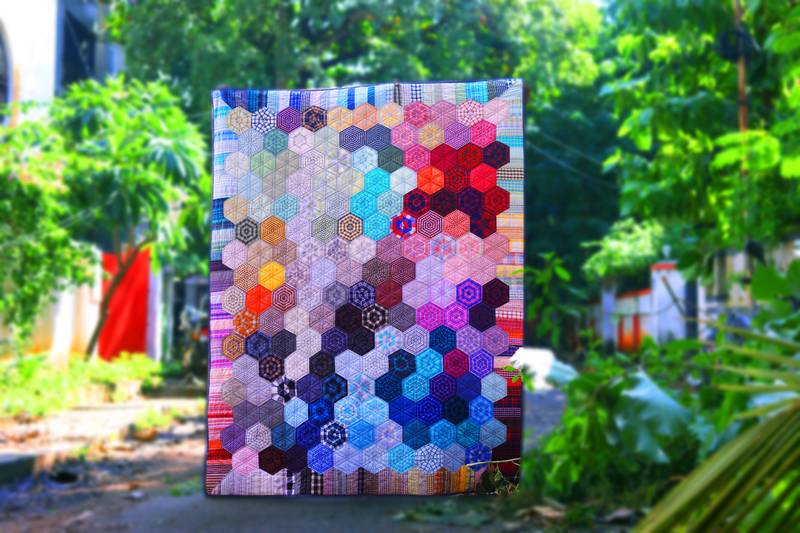

Hexie Love, that Dr. Aish quilted for her brother that took a year to piece and quilt, and around seven years to collect pieces of plaid fabric.
You started from there, and then eventually you turned that into something that you could share with women at a shelter. And that has now again grown into a full blown project. Where there is learning, fun, and at the same time, livelihood too. I want everybody to listen to how it is that you shared this form of art with women at the shelter.
Again, any art form, especially quilting, is not an art form you can keep to yourself. Every quilter is also a teacher; you want to share how it’s done. So at the shelter, our women are always doing stuff—a bunch of women, not everyone you know—because we have women that are doing computers, then there are women that are into accounts, and a bunch of women are interested in doing handwork and sewing. I sat with them and taught them; I just initiated them into it. Since then, everyone’s journey has been different. Everybody picks up their own favourite technique; everybody’s method is different. Slowly, we tried to tie this into our livelihood program. We’re looking for unique new products, new ways of making things that are also saleable, that are as useful as creative, and that many people will want. Which is also not to make art for the sake of it but to but use art to create products that can be put to everyday use, like a table runner. People will want to buy such products. We’re still nascent; we’re still growing. In another month’s time, we are moving into a new shelter space. Once we go there, we’ll have a dedicated studio where the women can experiment further.
Yes, in a month’s time, if anybody is coming to Chennai, you will see a fully accessible space for women with disabilities that they’ll be staying at and creating art from!
Also, to add to this, normally when we talk about quilts, everybody’s understanding is that it’s a bed sheet or bedspread, but also now there’s a lot of interpretation of skills as art that you can display on walls, etc.
Oh wait, here we have to talk about your quilt that won an international award!
Oh yes, so most of us make quilts for fun. I mean, what’s exciting is what colors and patterns speak to you at that moment. But in January 2021, there was this incident that shook all of us as a nation, The incident of a Dalit woman in Hathras of UP. A young woman was gang raped and left to die on the field. And when they found her, she was almost dying. She identified her killers. And then she was taken to a hospital, but she died. Now as we know, all the men have been acquitted. That was a terrible ordeal for a young woman, it is the kind of time that we live in, where there is no justice for Dalit women. So there was an event at that time, the ‘Indian International Quilt Festival’ was organised by a group in Chennai. I took inspiration from an artwork of Malvika Raj, an artist from Bihar, and I made a quilt out of it in memory of the Hathras victim. This quilt got a jury special mention.
It is because of you that we’ve been introduced to quilting, and since then, I have seen a lot of people experiment with quilts, but only for the first time with your quilt did I see the space being used for something that is important. You used the space to express the anger and the helplessness that was there. Art is political, after all.
Everything is political. The food we eat, the clothes we wear, everything is political.
Of course, but then we live in a country where that isn’t expressed as it is, right? Artists, especially when they say anything slightly political, are under the radar all the time. A lot of people we know are in trouble. How is it that you want to develop art like this by yourself or even at the shelter? The shelter does a lot of advocacy; how are you going to tie it in with art?
Advocacy and art—we haven’t yet blended these. It’s more of a personal journey for me. I’m not thrusting that on the shelter. It’s their individual choice to understand issues or have the volition to talk about them. But we do take advocacy very, very seriously. The issue of toilets in public spaces, especially in a large metropolis like Chennai, toilets not available for women or persons with disabilities. That was an issue that we took up on a large scale. Another area of advocacy that we’ve been tirelessly pursuing and that took our time all of last year and consumed all of us at the shelter is public transport in Tamil Nadu, Chennai. Especially buses are not disabled friendly. Buses’ doors are three and a half feet high. The easiest and most widely available form of transport is out of reach for people with disabilities, especially those with locomotor disabilities. Somebody with a wheelchair is not able to get in, not just women with disabilities or men with disabilities. It’s also pregnant women, somebody who’s having a temporary disability, or somebody who’s just recovering from surgery. For at least 17 years, there have been various legal actions taken by the disability community towards this end. Last year, a couple of our shelter residents impleaded themselves in a PIL. We work with the Disability Rights Alliance, who are leading the legal battle, and we’ve just gotten very favourable orders from the court. Tamil Nadu government will now have to procure buses that are low floor, and we hope this happens soon.
I’d also like to highlight the fact that you’ve also been advocating for land, land for women with disabilities because there are laws in place that say land has to be redistributed for people with disabilities.
That is the way forward. We are asking that in housing allotments of the government, that there should be a priority, particularly for women headed households, that is, women with disabilities.
Now, bringing this conversation to an end, I would like to come back to where we started, where we spoke about how we need to think about alliances, both at a personal level and at the level that we are talking about community issues or social issues. If you were to use all the experience that you’ve accumulated in your life and say something to young people about being kind to each other and being empathetic to each other in the work that we do, how would you say we should do this?
This conversation brings into focus again that there is a great need for kindness and compassion in this world. Sometimes we think that kindness is weakness, and being feminist doesn’t have to be. The portrayal of a strong woman as being, a severe woman, it need not be the case. And also in our relationships, especially within the sisterhood. When we share conversations and friendships between women, there is a need for grace. I think we need to practice grace more intentionally. Everybody has a point to make. Make your point, be firm, but be a little forgiving as well. Cherish relationships, be friends, and keep friendships. Cultivate friendships over a long period of time with a wide variety of people across ages, and do so with the intentionality of cultivating a friendship. Especially out of your everyday life, if somebody is working in the film industry, all their friends are in that same group. So we need to have friends outside of that, that’s why the pursuit of art helps us to meet with new people because you need that echo, you need listening to new perspectives, not from the same group that you’re listening to all the time…
I’m not a religious person, but I believe in the community. I have faith. And I believe in this community. I go to church simply because it’s a community. It’s a community space. And it’s people that we have seen since childhood apart. We disagree with each other. We hate each other. There’s so much going on in that space. But it’s a space that’s important.
But friendships always exist in these cliques, like it’s within castes or within these class settings, and these relationships exist and are located in these tight boxes.
See, my father was a civil servant and a first generation college graduate from a so-called untouchable caste. He grew up under very challenging circumstances, yet he had a zest for life and a penchant for art - he was a self taught artist and musician. He used to go walking every morning, and one of his friends was this lady selling flowers near the neighboring temple. When he went for a walk, he used to stand there and just talk to her; they had a good friendship going. When there was a function at her house, she would invite him, and he would go. I see that as healthy, not just an acquaintance, it’s a friendship. These are the values I was brought up with. And somebody that you bring into your own home, you share your life experiences with them, and if we are in need of something , we reach out to each other. I’ll give you another example. I really have to express this, the community of the church. I’m not a religious person, but I believe in the community. I have faith. And I believe in this community. I go to church simply because it’s a community. It’s a community space. And it’s people that we have seen since childhood apart. We disagree with each other. We hate each other. There’s so much going on in that space. But it’s a space that’s important. When my father was critically ill, the whole community reached out. They would quickly assign roles for each other. “I’ll take this time slot; you go take a bath and come, we’ll get the food after.” This was the case when my father died and when my mother passed away. We have friends that will come, stay for a certain time, and then go, but this community stayed with us for nearly six months. Somebody would send food; for six months, we were getting food at home. So we need this; this community feeling is important.
I agree with this. We can talk about self love, but like Bell Hooks said, what is self love without the love of the community? If you are not feeling the love from people around you, how will you feel that love for yourself? How will you love yourself if a community isn’t expressing love towards you?
This conversation around self love has taken on another level. It is important, of course, but I’ve felt most cherished in community spaces.
I know, I am saying it is great that such spaces exist, even if within institutions, as an extension. Across the world, if there are no community spaces where love is felt, like what you are describing, I don’t know if people will really feel connected to each other or to society, which we all have to work for, right?
Yes, when we go out of our way, and allow ourselves to be involved in matters that affect those in the community, there is a certain amount of self healing too. That is my way of approaching self love—looking out for one another. See, COVID was a great lesson for all of us. It taught us that unless everyone was protected, the individual wasn’t protected. We really needed everyone to be safe, and only then were we safe. That has to be our general approach in life too – if one person is left behind, then all of us are dragging ourselves back.
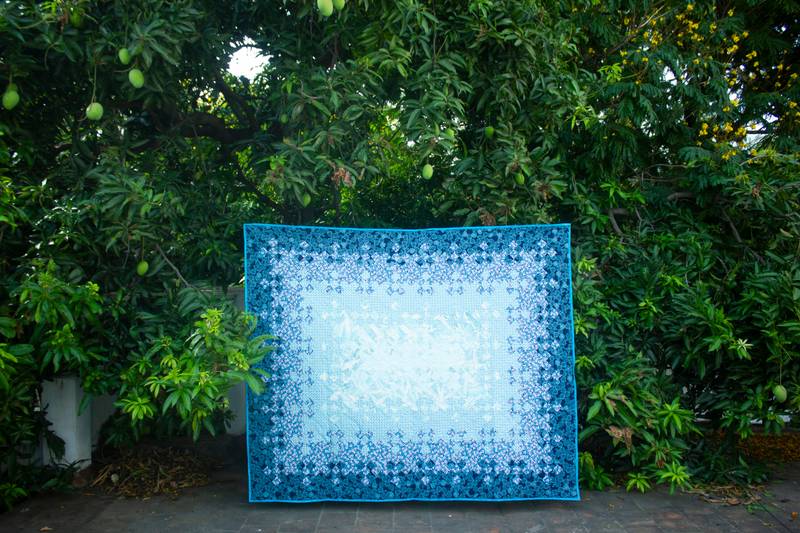

A #quiltypleasure for a friend by Dr. Aiswarya Rao
